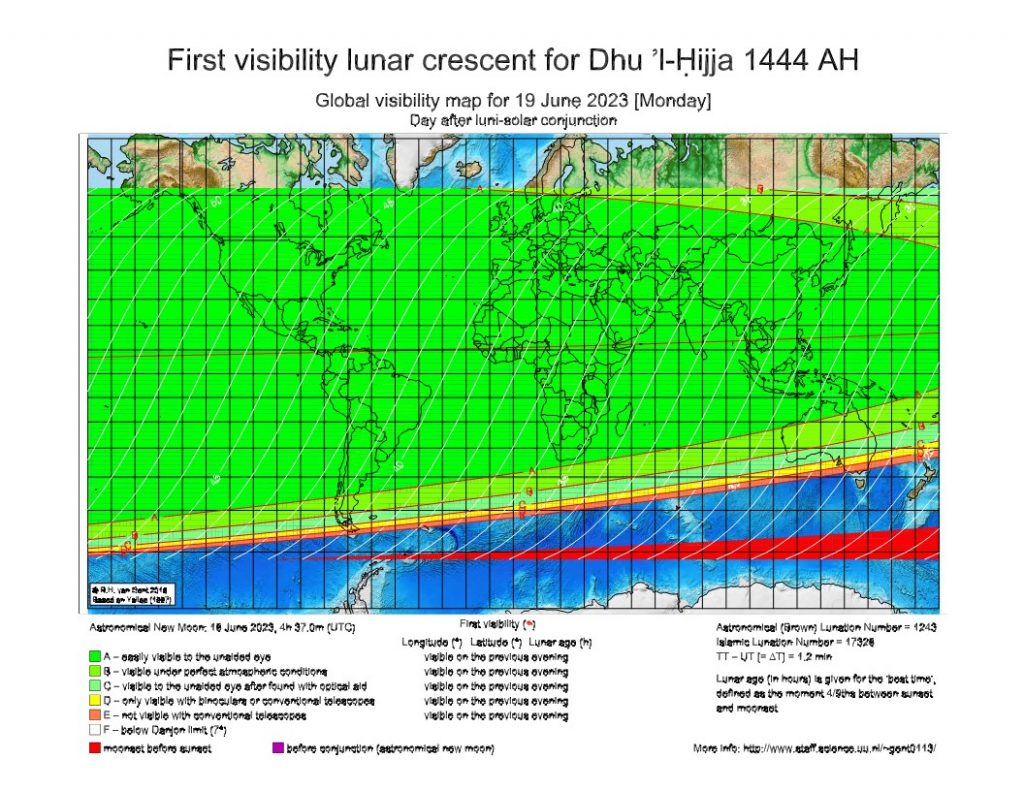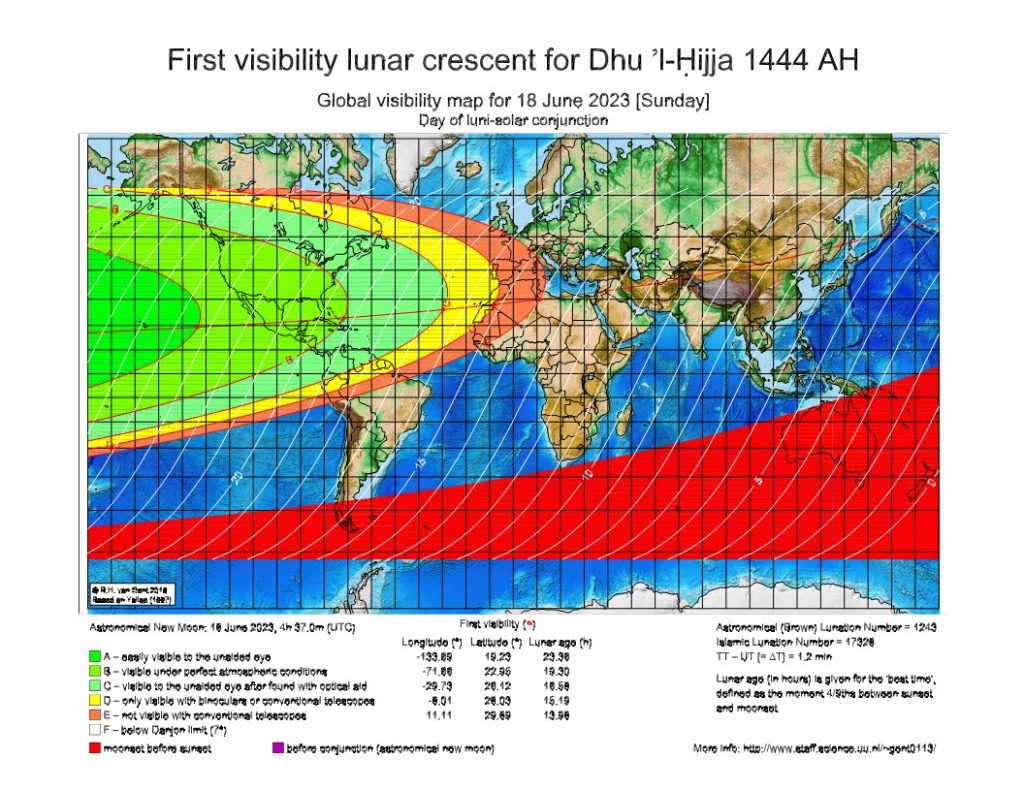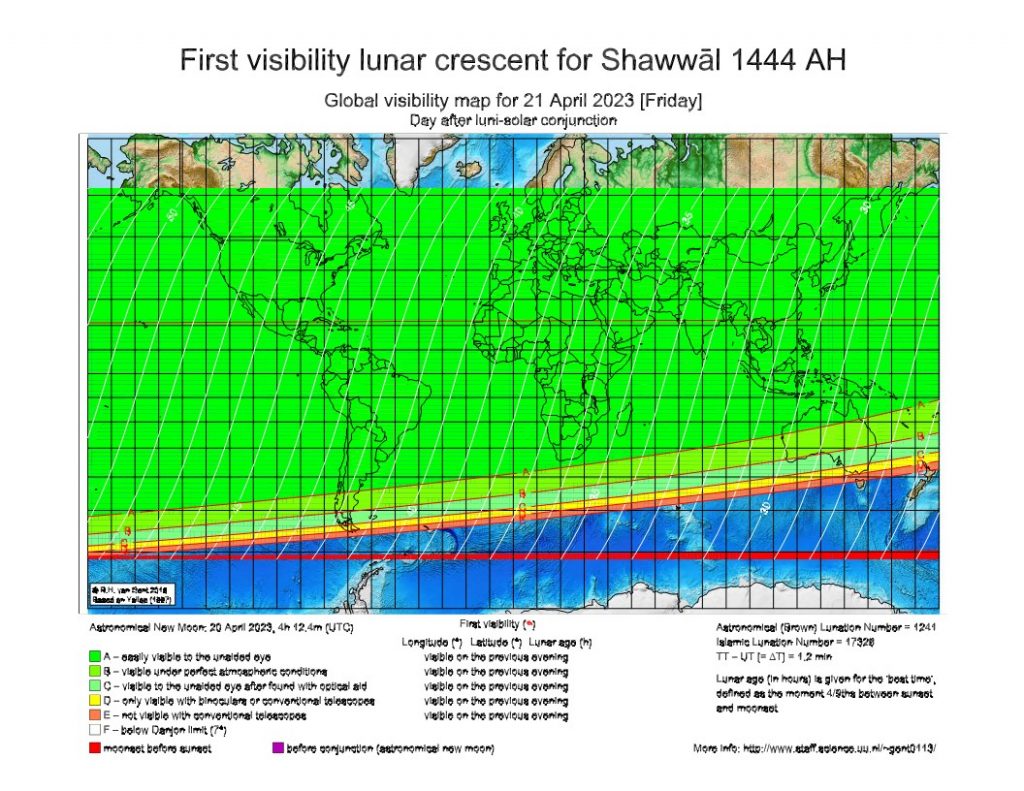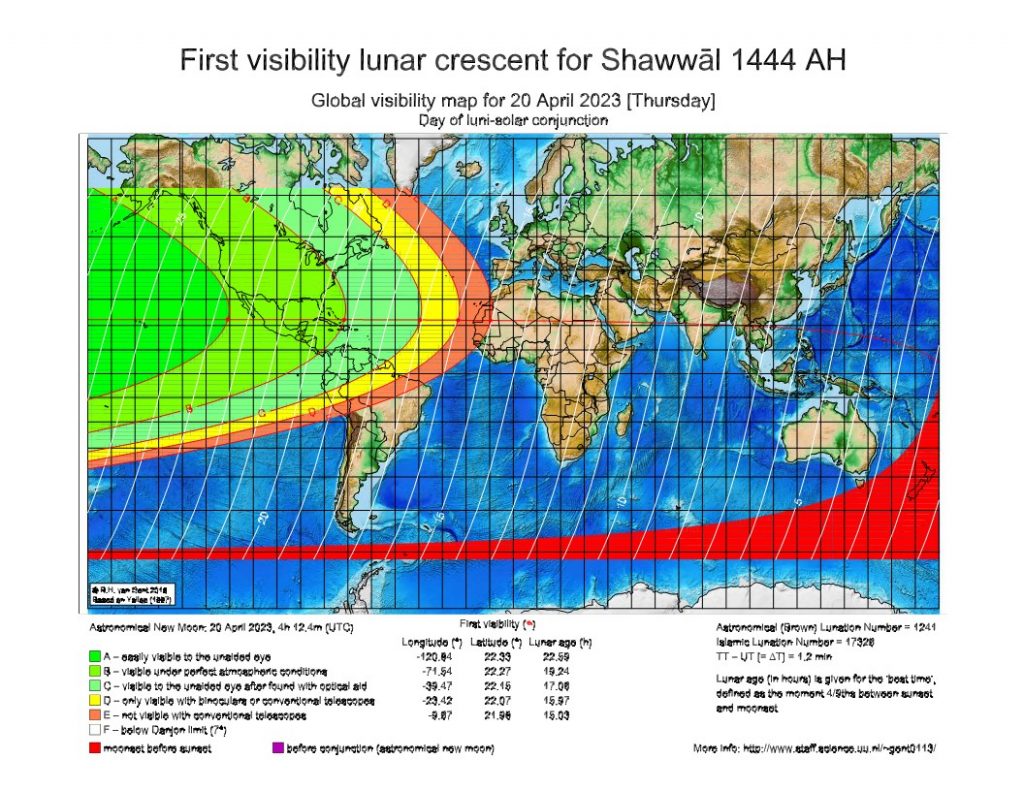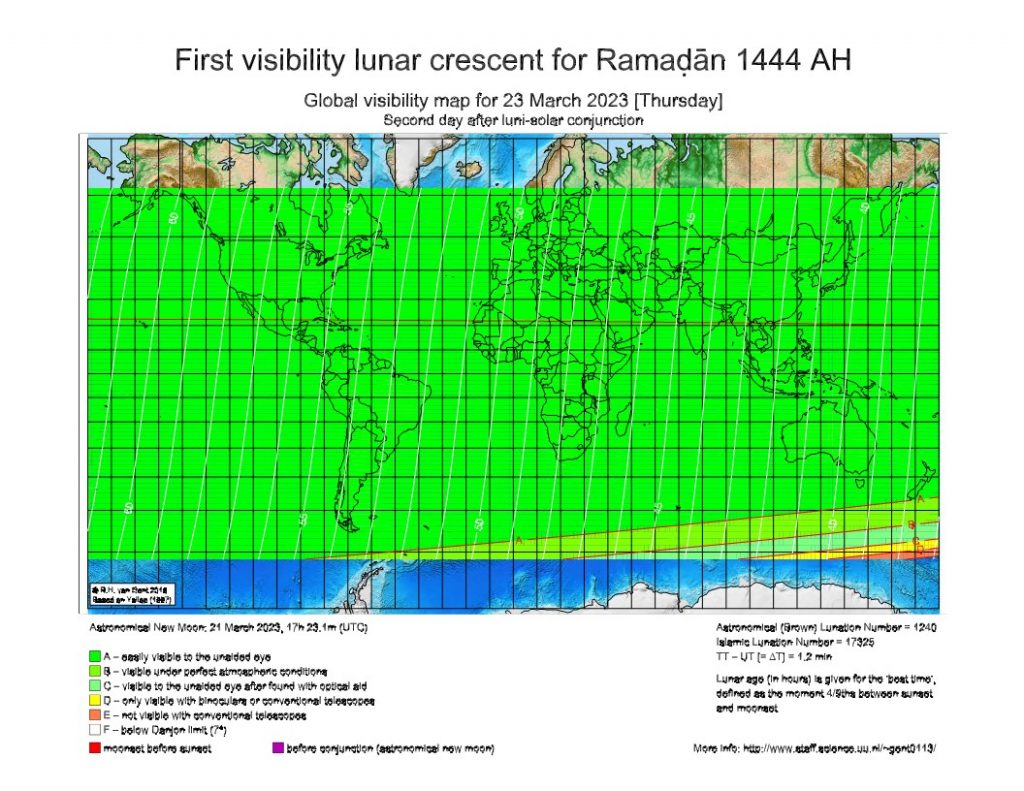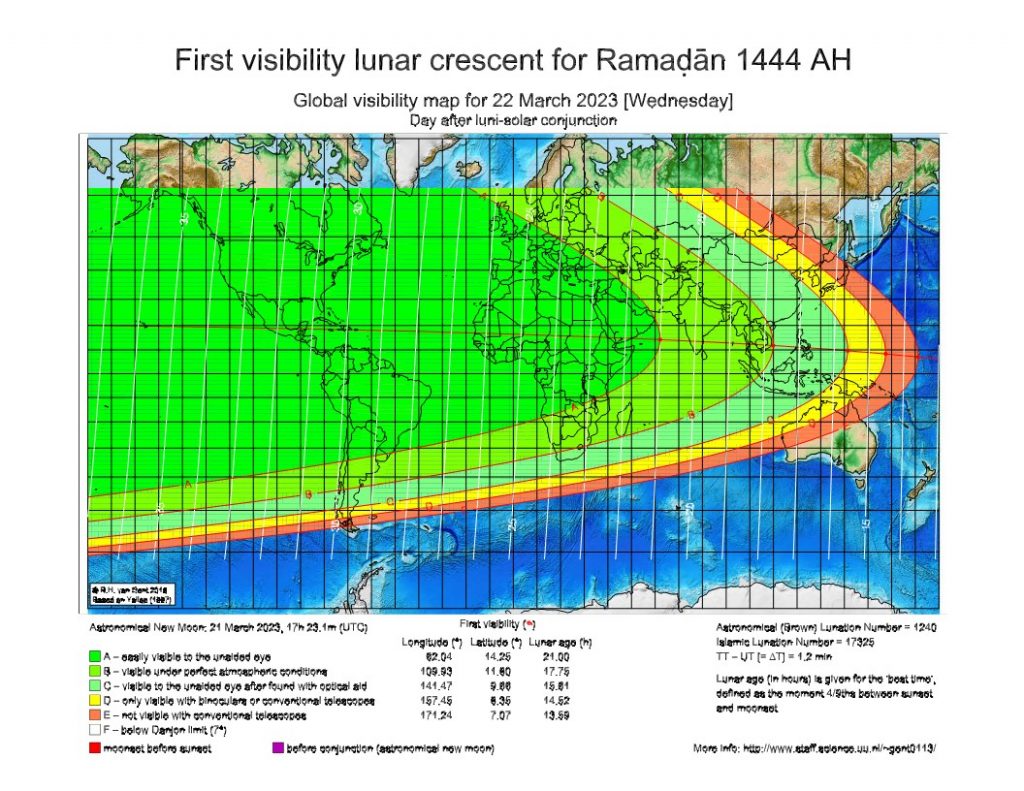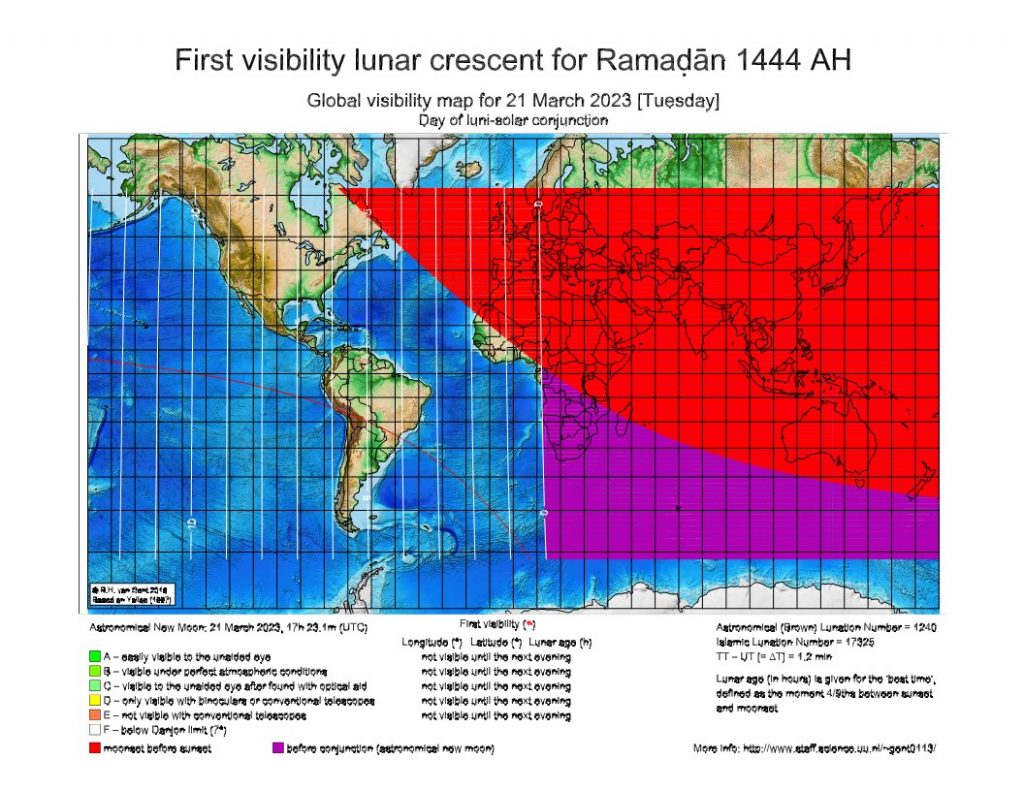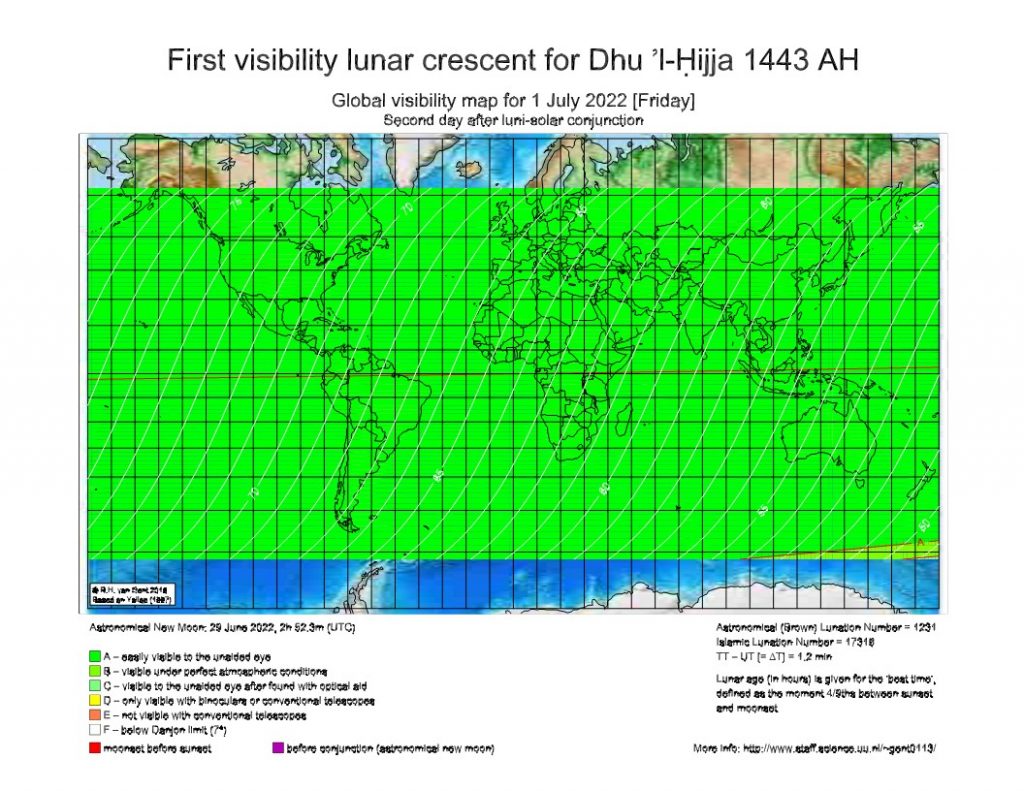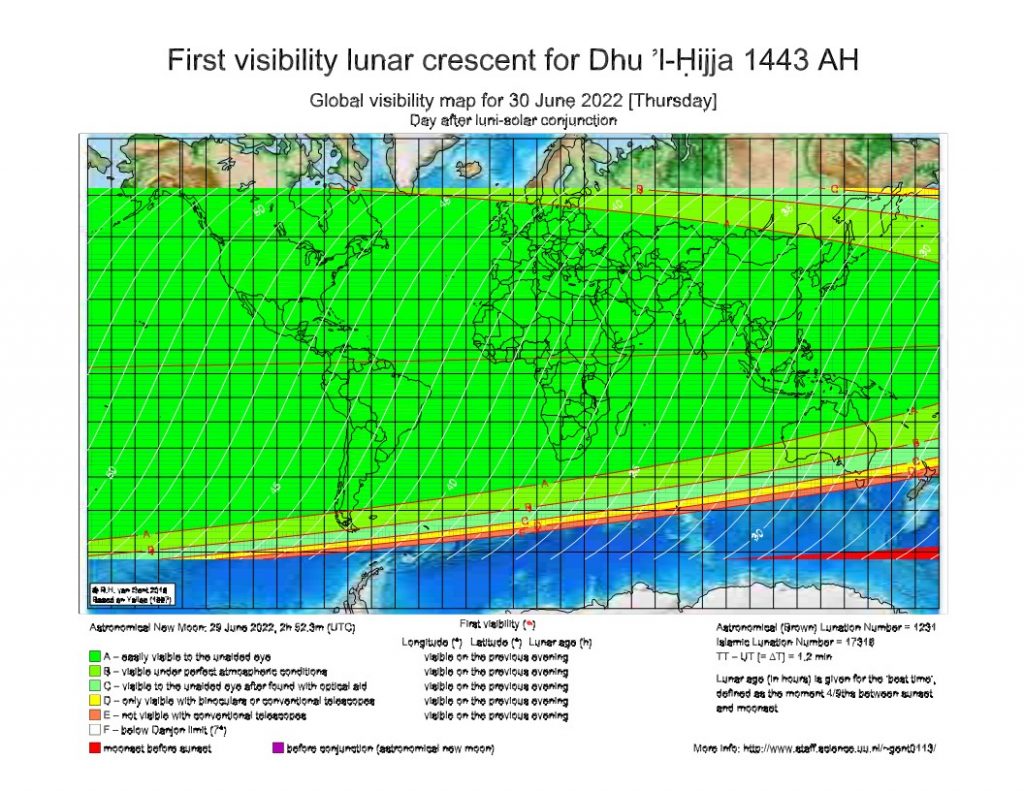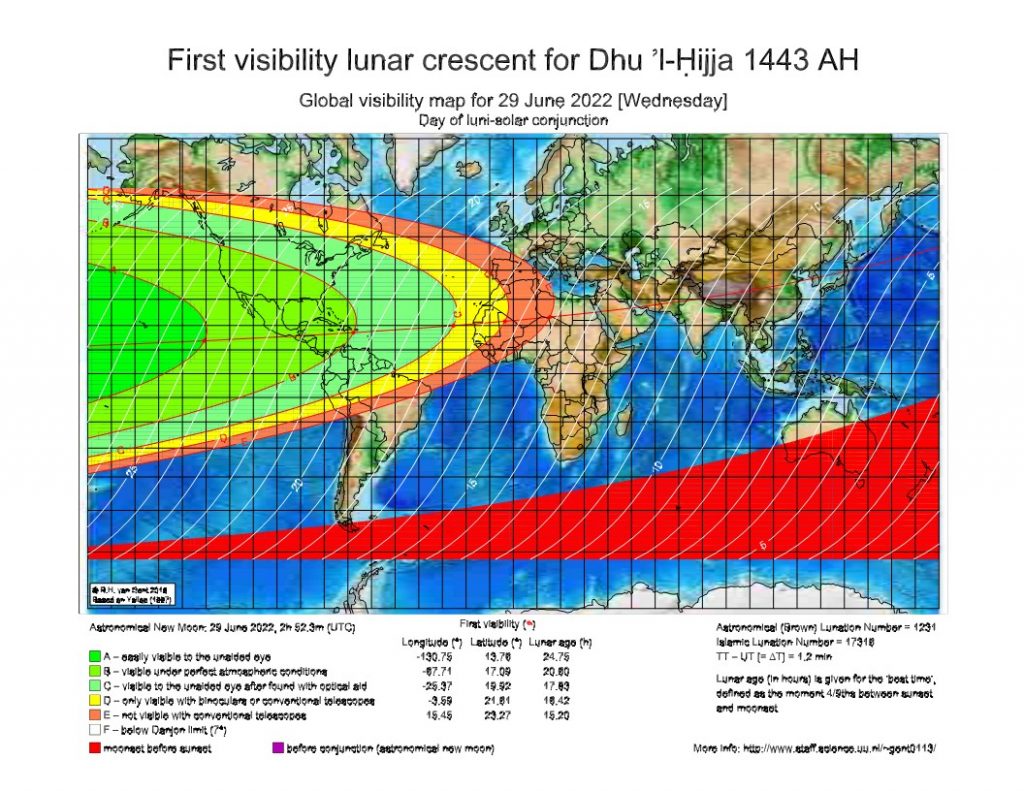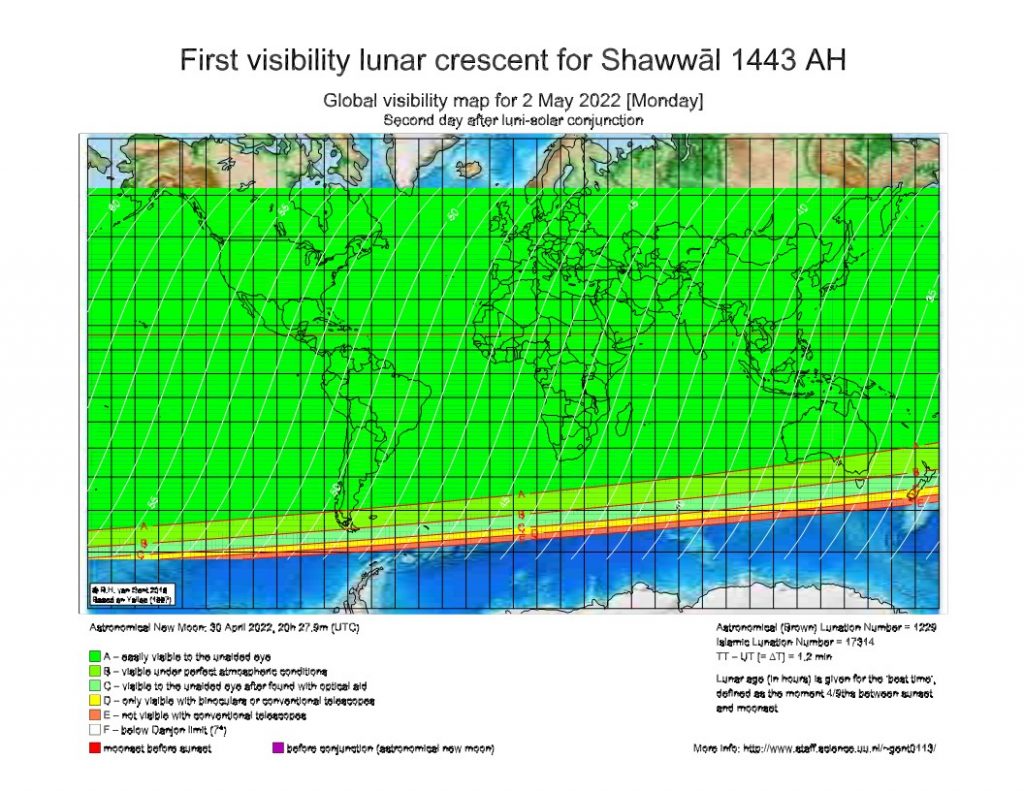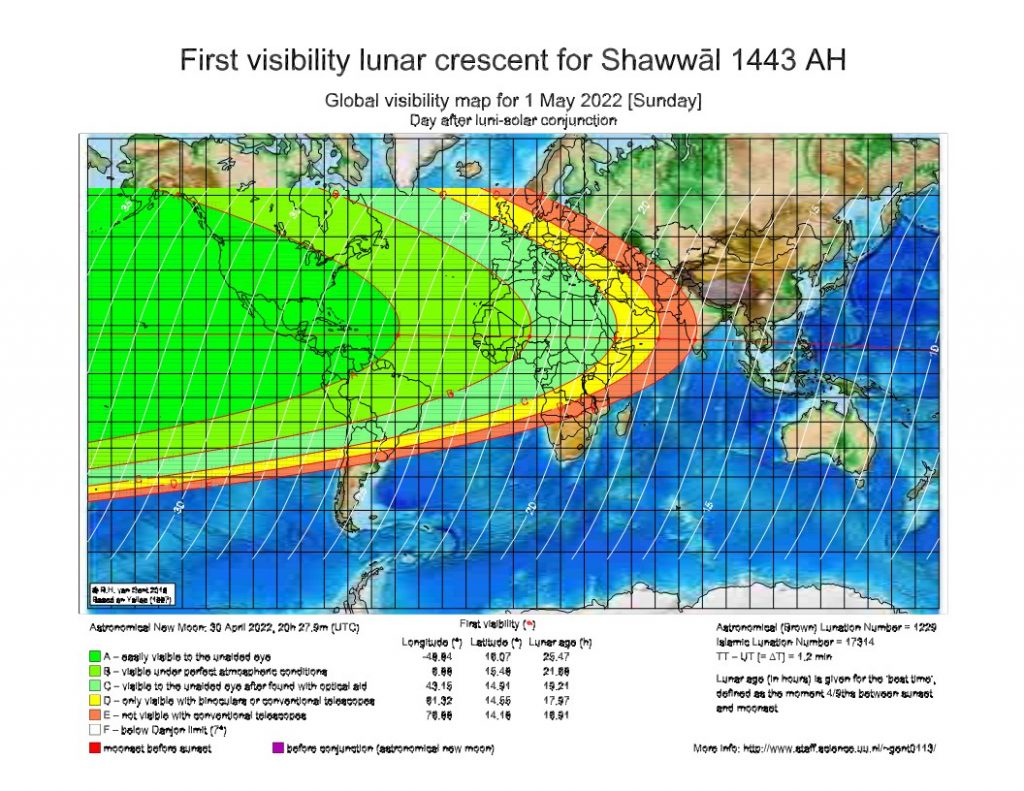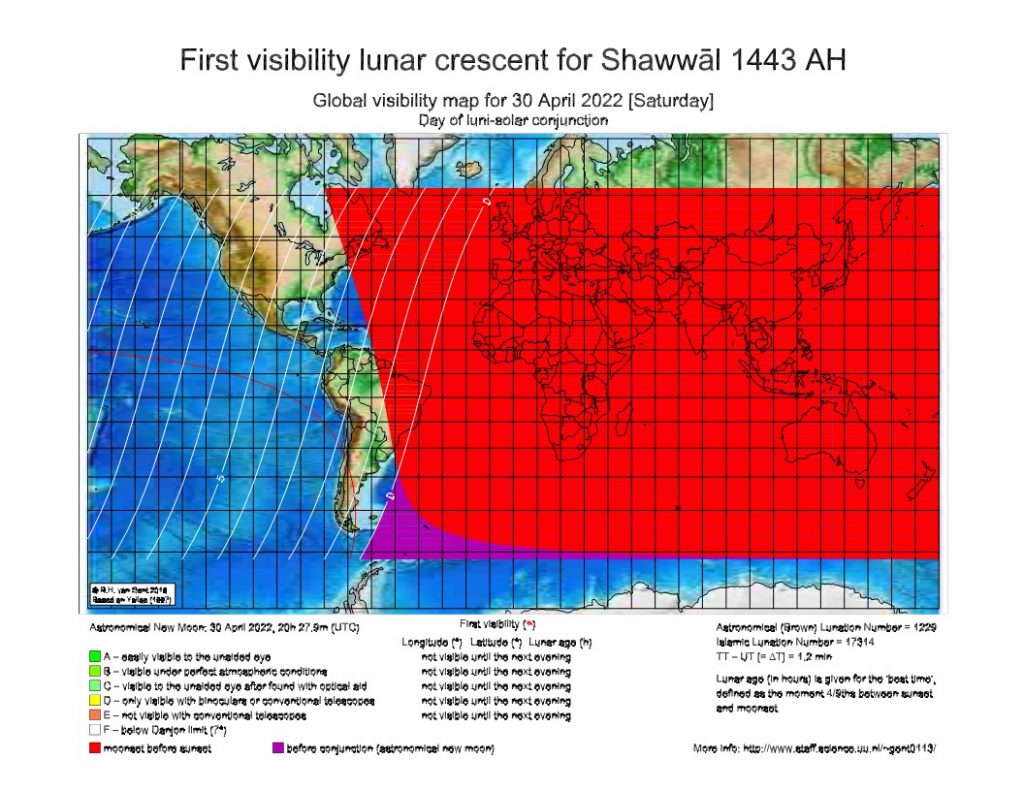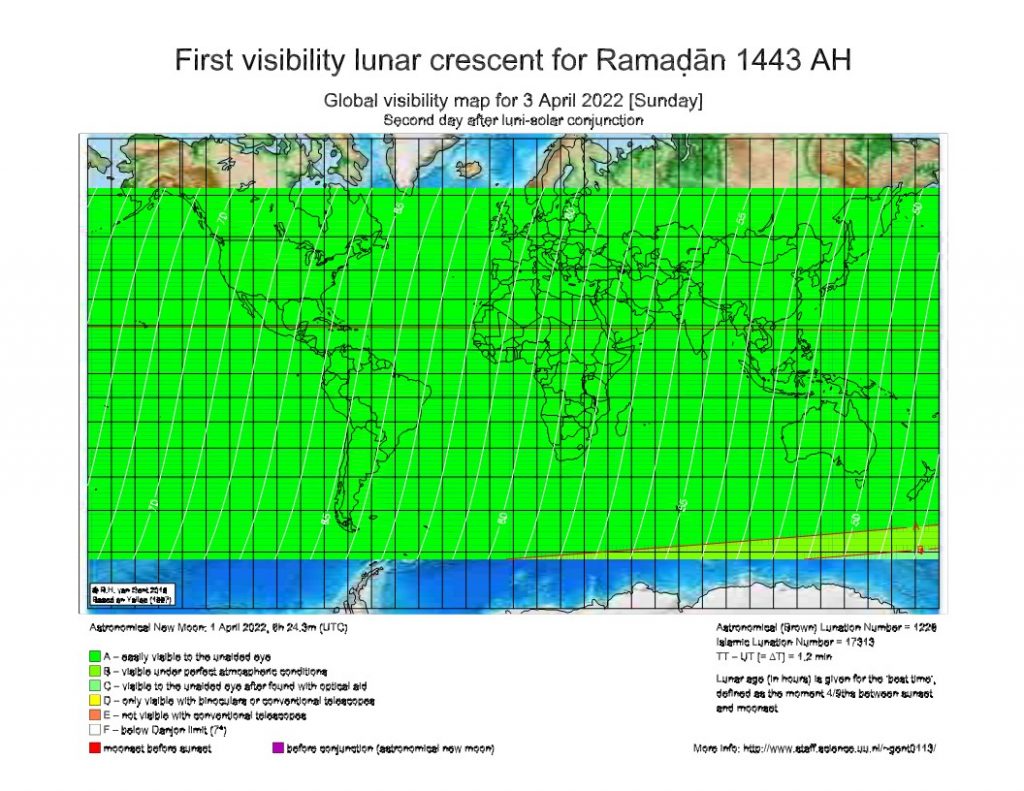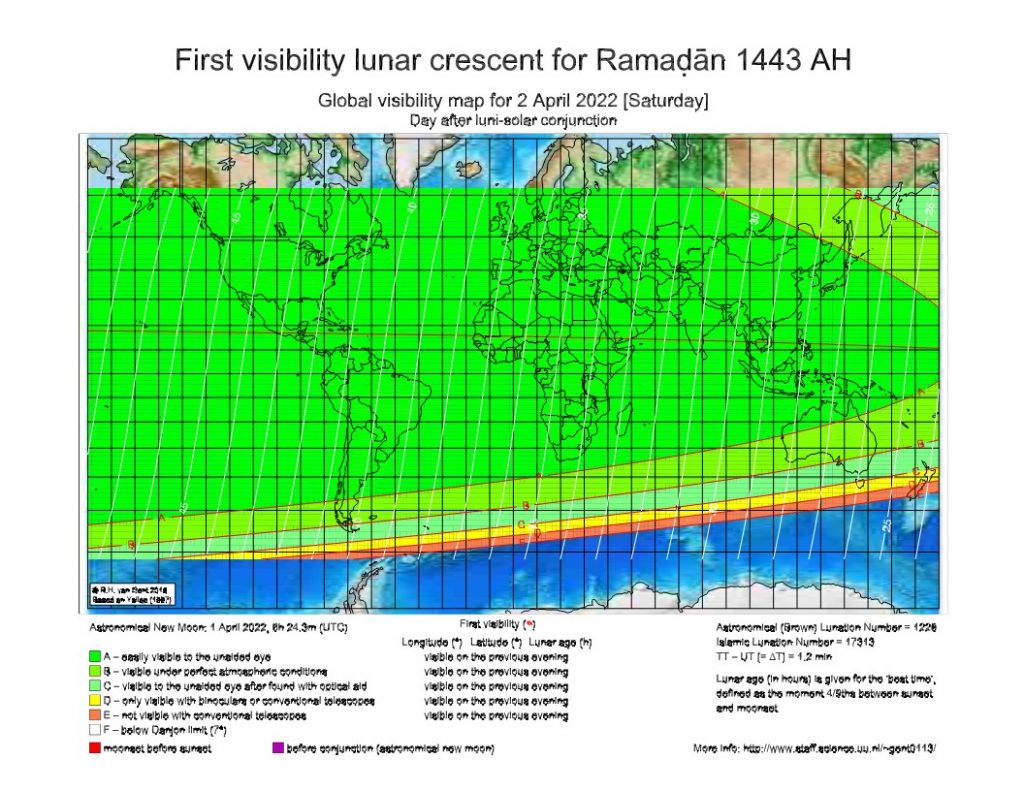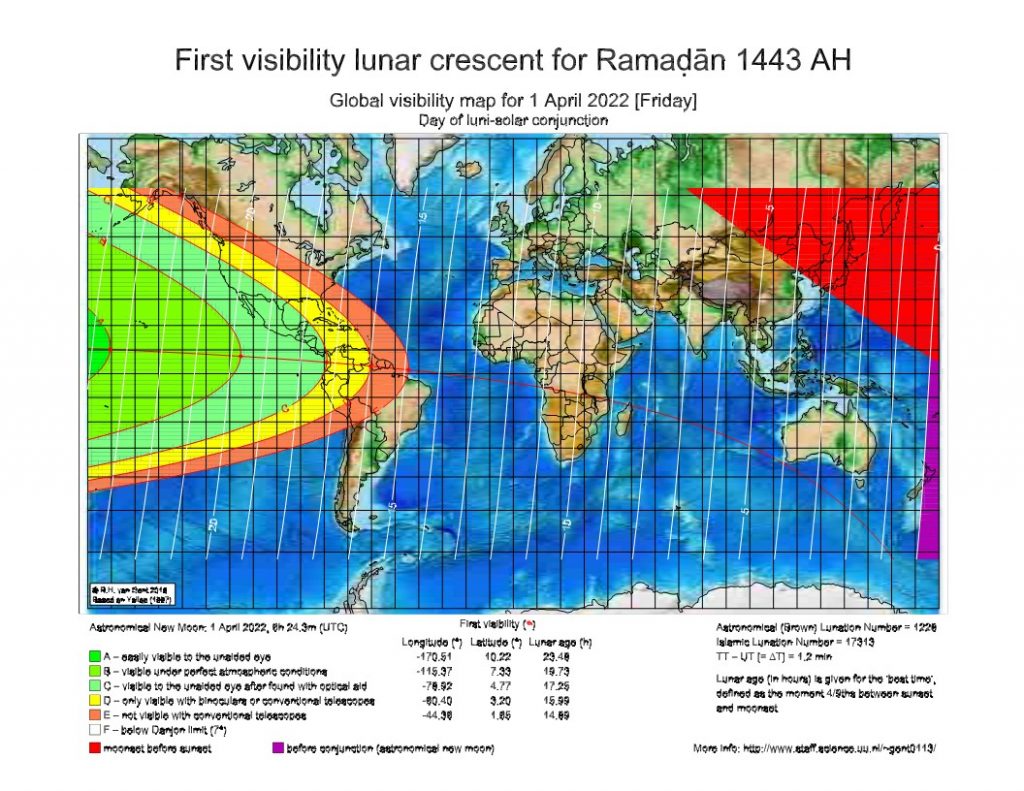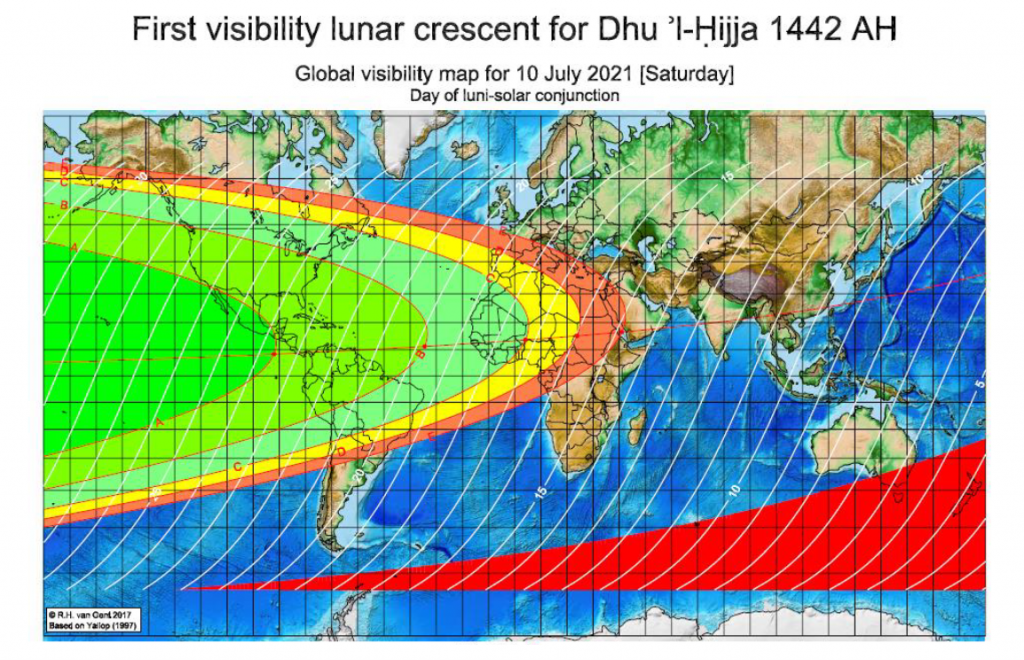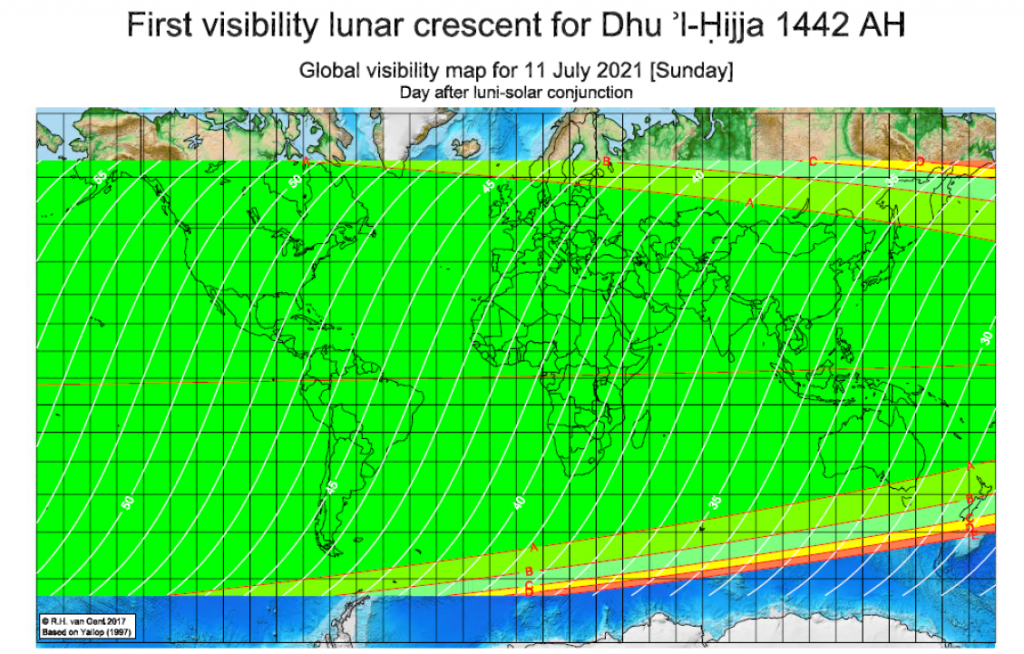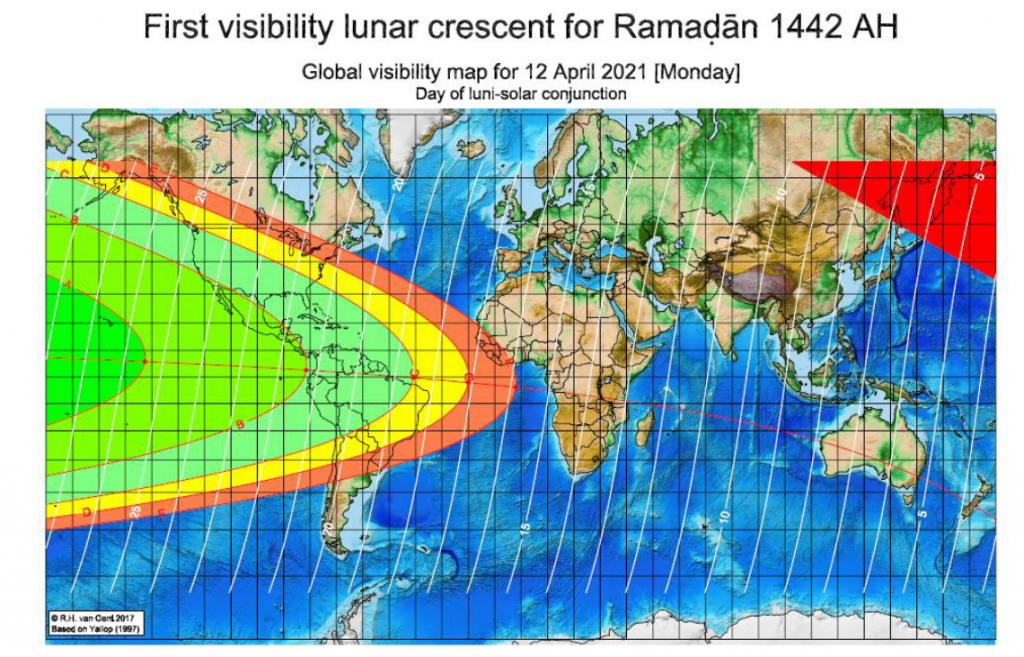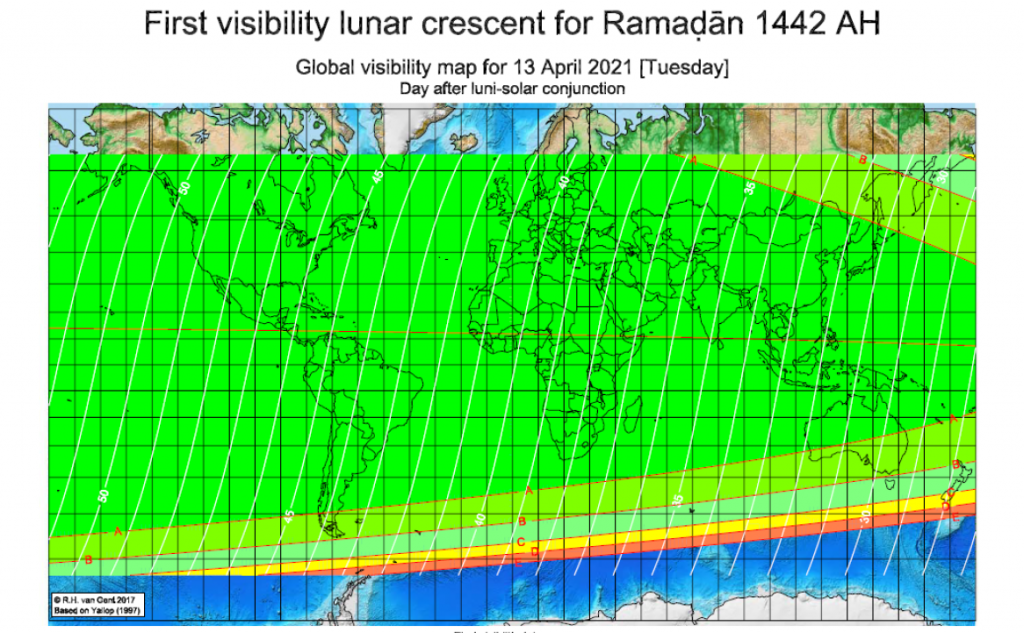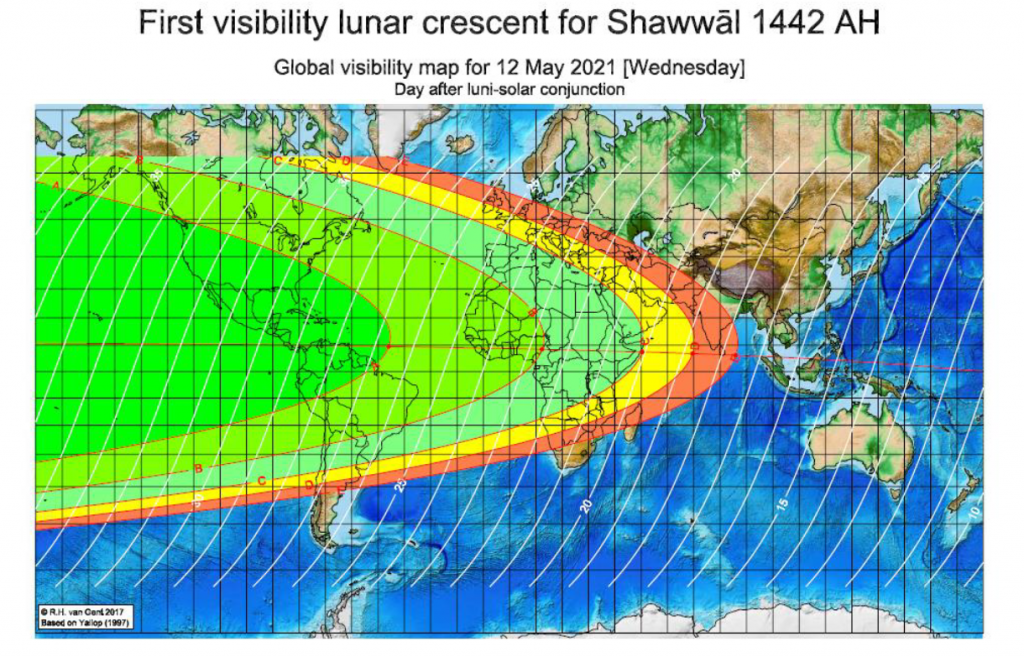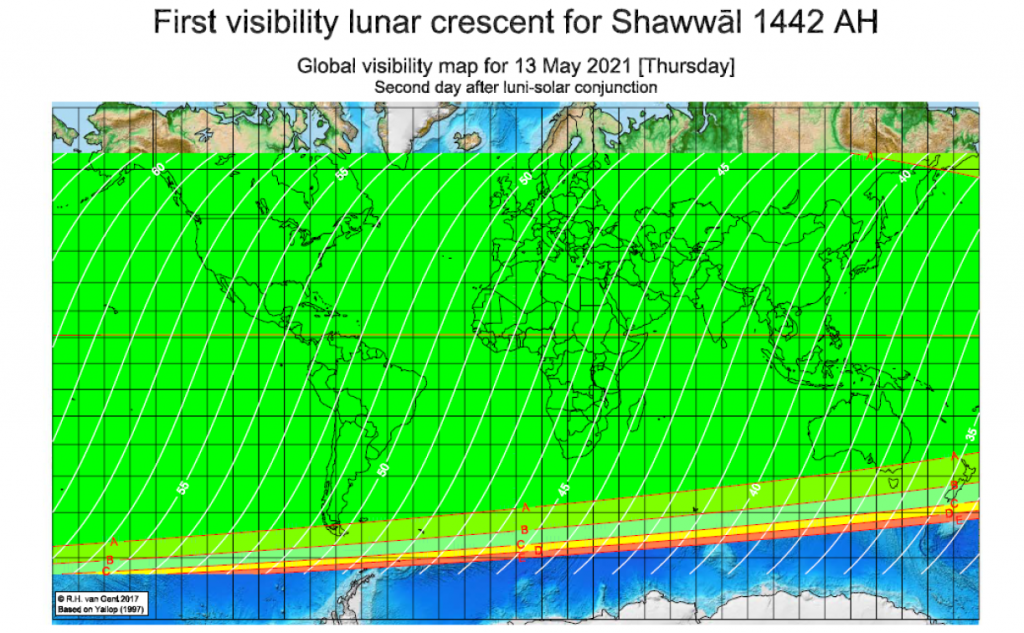Crescent Moon Sighting Criteria
For the start of the Islamic month we look for the first possibility of seeing the new Moon with the naked eye. If this is seen anywhere in a country, we take it as the sighting for the whole of country and declare the start of the Islamic month. Criteria we use is from the Royal Observatory see website http://astro.ukho.gov.uk/websurf/
which is as follows:-
The criteria A, B or C is used for sighting of the new Moon.
In criteria, C, if one knows where to look, one can see the Moon with the naked eye.
If anywhere in a country, it is possible to see the Moon with the naked eye (condition C or higher exists) the whole country can start the new Islamic month.
In the case of Ramadhan, the next day would be the first day of fasting for the country.
A: Easily visible
B: Visible under perfect conditions
C: May need optical aid to find the crescent Moon
D: Will need optical aid to find the crescent Moon
E: Not visible with a telescope
F: Not visible, below the Danjon limit
Ramadhan 2023 and Eid Dates
Based on this and by looking at the visibility maps below, the following dates are proposed for Islamabad, Tilford, UK:-
| Event | Date |
|---|---|
| Start of Ramadhan in UK | Thursday 23rd March 2023 |
| Eid-ul-Fitr in UK | Saturday 22nd April 2023 |
| Eid-ul-Adhia in UK | Thursday 29th June 2023 |
Further Reading
- The term ‘New Moon’ means when the moon has gone through all its phases and is approximately at the same longitude as the sun. This is know as conjunction
- From one conjunction to next conjunction occurs around 29.5 days and is known as the lunar month
- At conjunction, it is impossible to see the moon
- By using astronomical calculations, it is possible to calculate precisely when conjunction occurs
- What is more difficult to calculate, is the actual visibility of the new moon by the unaided eye
- We as Muslims are interested in this sighting, because it was the practice of the Holy Prophet Muhammad (peace and blessings of Allah be upon him) to determine the beginning and ending of the month of Ramadhan by sighting the moon with the unaided eye
- The thin crescent visibility is dependent on several factors, such as: –
- The age of the moon – generally the age of the moon should be at least 22 hours
- How far the moon lags behind the sun before it sets. The greater the ‘lag time’ after the sun has set, the better the chance of witnessing the new moon
- Of course, if the moon sets before the sun, it will not be possible to view the moon!
- The altitude of the moon is how high the moon is above the horizon at sunset. The higher the altitude the greater the chance of visibility
- The moon azimuth is how many degrees along the horizon with 0 degrees being North. The important factor is the delta azimuth – i.e. the difference between the sun and the moon on the horizontal plane
- The angular separation – or the elongation – between the sun and the moon. This is one of the most important factors
- It is not possible to see the moon, even with a telescope if the elongation is around 7 degrees
- This limiting factor is known as the Danjon limit
- For unaided eye, elongation must be at least 12-15 degrees, but much will depend on other factors also being favorable, for example lag time, age of the moon, altitude etc
- Atmospheric conditions – on a cloudy day it will not be possible to see the moon
References
Data: http://astro.ukho.gov.uk/psp/index_beta.html
Visibility maps: http://www.staff.science.uu.nl/~gent0113/islam/islam_lunvis.htm
Yallops Criteria: http://astro.ukho.gov.uk/download/NAOTN69.pdf
Moon Watch: http://astro.ukho.gov.uk/moonwatch/

